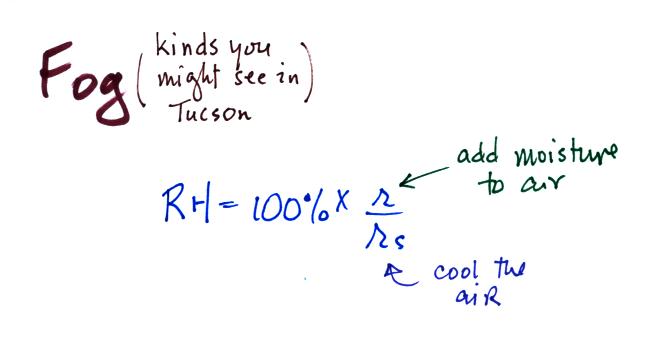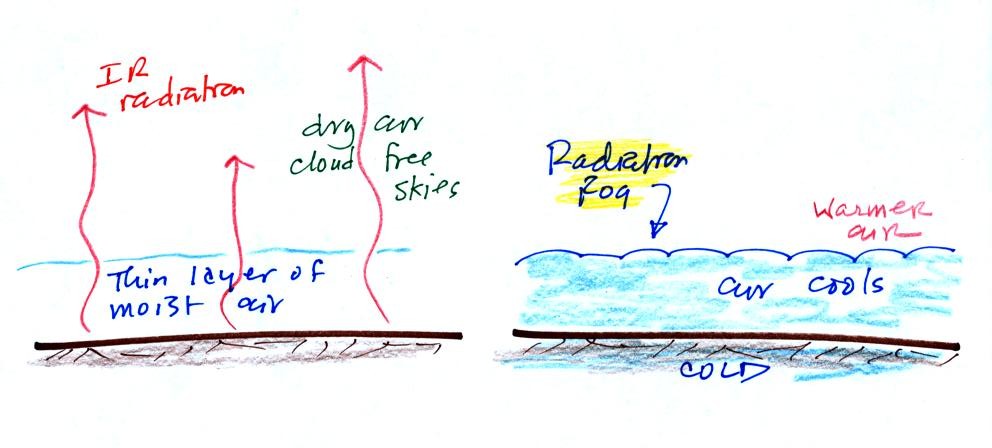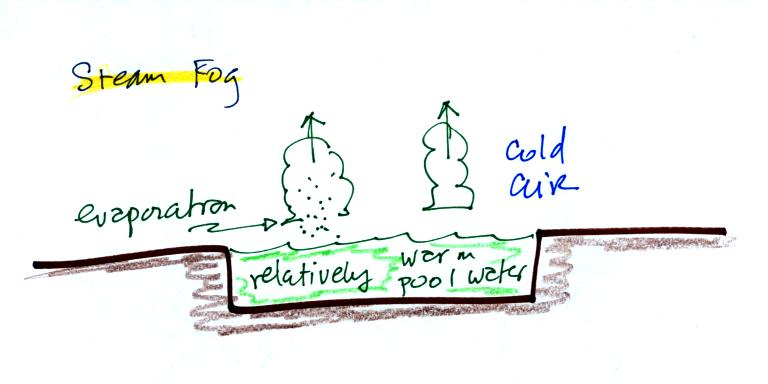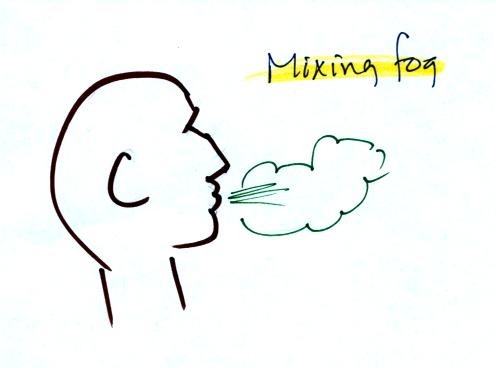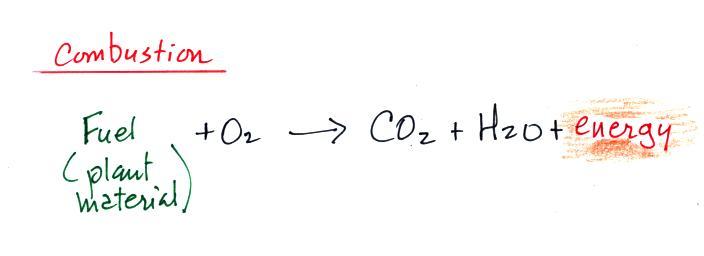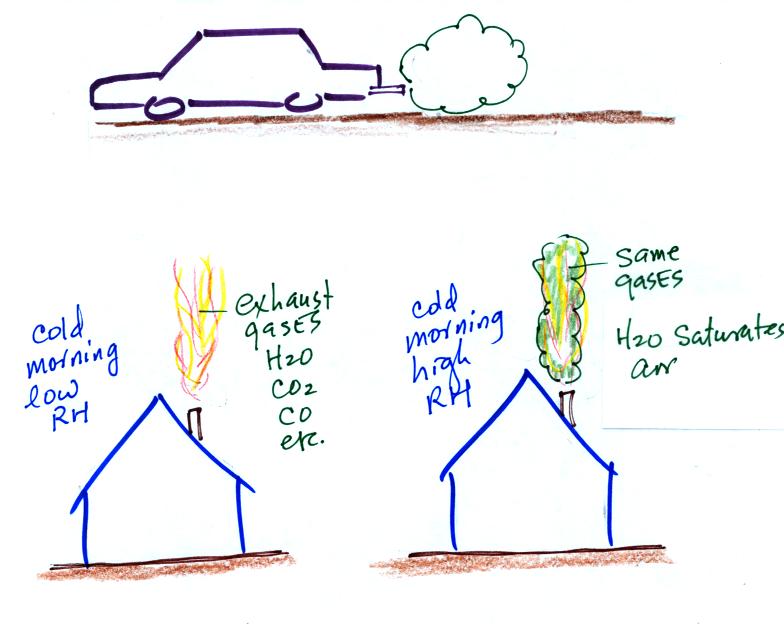click here
to download these notes in a more printer friendly format
Fog is a relatively rare event in Tucson because the air is so dry
so much of the time.
To produce fog you
first need to
increase the relative humidity (RH), in air next to the ground, to
100%.
You can do this either by cooling the air (radiation fog) or
adding
moisture to
and saturating the air (evaporation or steam fog). Both will
increase the ratio in the RH formula
above.
Radiation fog is probably the
most common type of fog
in Tucson.
The ground cools during the night by emitting IR radiation (left figure
below). The ground cools best when the
skies are free of
clouds and the air is dry (except for a thin layer next to the
ground where the fog will form).
Air in contact with the ground cools and radiation fog can form
(right
figure above). The fog cloud is cold dense air and "hugs" the
ground. The radiation fog in Tucson is sometimes so thin that you
can look up and see blue sky.
Radiation fog is also called valley fog.
The cold dense foggy air will move downhill and fill low lying
areas. Because the fog reflects sunlight, it is often
difficult for the sun to warm the air
and dissipate thick clouds of valley fog.
Steam fog
or evaporation fog (also sometimes known as mixing fog). This is
commonly observed on
cold mornings over the relatively warm water in a swimming pool.
Water evaporates from the pool
and saturates the cold air above. Because the fog cloud is warmer
than the cold surrounding air, the fog clouds float upward.
It's the same idea when you "see your breath" on a cold day
Warm moist air from your mouth mixes
with the colder air outside. The mixture is saturated and a fog
cloud forms.
You
might remember the following two reactions from earlier in the
semester when we were talking about photosynthesis and combustion
Combustion is in principle just the same reaction in reverse.
Combustion sometimes adds enough
water vapor to the air to saturate the air. Clouds form in that
case. Here are a couple of examples
There is enough water vapor in automobile exhaust to saturate the
air and form a cloud. The exhaust from a car may, of course, also
be smoke from burning oil or something like that.
Exhaust from a natural gas fueled furnace or hot water heat contains
water vapor. Most of the time you won't see the exhaust gases,
but when the relative
humidity is high you can see a cloud coming from one of the
vents pipes on the house roof. People will sometimes mistake this
for smoke and will call the fire department.
